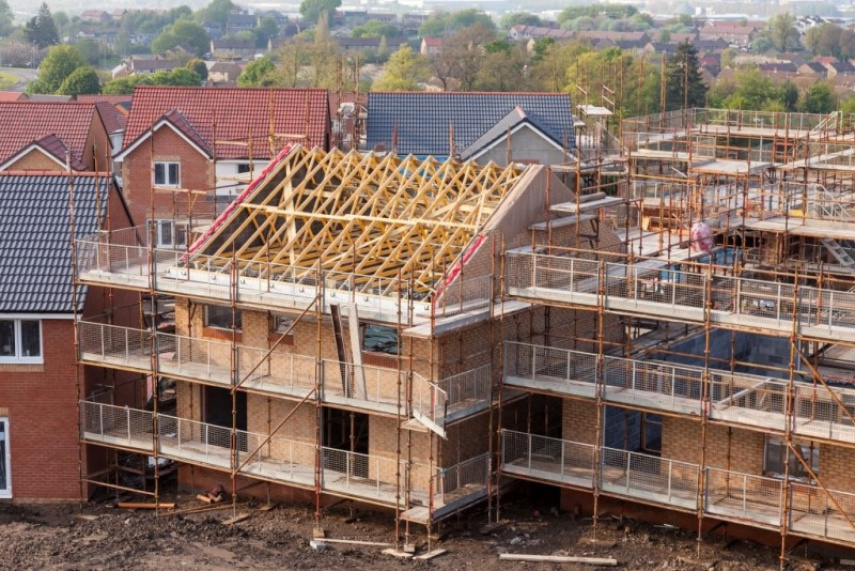
Tackling land market failures is essential to getting more homes built in Scotland
David Adams
Land Commissioner David Adams highlights the importance of addressing the failures in our current land market to improve the availability of housing in Scotland in our latest blog.
The housing land market gets much less attention in the press than the housing market itself. But how land intended for new housing development is bought and sold can have a crucial impact on when development takes place, what form it takes, and crucially on whether new homes are priced at affordable levels. The evidence is that housing land markets are not working well and that this has negative consequences for housing markets more generally.
Indeed, as Shona Glenn has explained, the inherent characteristics of land markets create outcomes that may be rational for individual land owners and developers, but which fall short of what is best for society as a whole. Closing this gap requires a concerted focus on combined value creation, rather than individual value extraction. If this can be done, building new homes and communities could be achieved more efficiently, equitably and sustainably.
Most housing land is sold off-market or rather reserved through option agreements between housebuilders and land owners, long before it is ever generally available. There is very little transparency about these agreements and information about prices paid or prevailing land values can be hard to find. The planning system restricts how much land is allocated for new development, which benefits the larger housebuilders, who are better resourced to navigate complex planning processes.
These companies often buy up allocated land cheaply during recessions, enabling them to dominate new production once the economy improves. This has reinforced the relative decline of small and medium-sized building companies over recent decades. The largest housebuilders may benefit financially from such concentration of market power, but a more competitive land market would better serve the public interest. And, as the economist Kate Barker said, “Once land is secured, competitive pressures are reduced: housebuilders can ‘sell anything’.” This comment may have been intended as a deliberate exaggeration, but there is strong evidence that housing land market failures lead to relatively slow building rates, higher selling prices and lower design quality.
The Scottish Land Commission’s research has shown that other European countries are much less reliant on volume housebuilders than Scotland and have a far more diversified range of providers, with more opportunities for self-build. More effective management of housing land markets here would widen the variety of builders active, increasing the number and diversity of new homes built. We would no longer be over-reliant on volume housebuilders who should not be expected to provide all the different kinds of homes society needs. Arguably, it could also make housebuilding a more stable business – less prone to booms and slumps. Such diversity is just as important in rural areas as urban ones. Indeed, making more building plots available at low cost in rural Scotland is crucial to the chances of rural repopulation.
The way land is bought and sold also means that it is often hard to meet infrastructure requirements of new developments (including roads, sewerage systems, schools, hospitals, etc). Too often new developments are also built with little connection to each other or to neighbouring communities because the fragmented nature of land markets makes it cheaper and quicker to develop different sites in isolation, rather than well-integrated with each other.
These are key reasons why many local communities resist new development proposals, and they can again be traced to land market failures. Recent research published by the Scottish Land Commission shows how European countries have reformed land market operations to ensure co-ordinated and better-quality development.
Significantly, land owners here have often come to expect a very substantial financial return if their land is allocated for development, putting unnecessary financial pressure on all other aspects of a development project. We need to debate what is a fair return to landowners and explore how they can contribute more often to improving development quality.
Sometimes, ‘passive’ land owners may actually get in the way of making development happen, so we need to find better ways to transfer land from passive to active owners. To address these problems, the Commission is advocating much greater adoption of ‘Public Interest Led Development’ (PILD) in Scotland, in which better integrated and higher quality development is secured through strategic management of land markets.
Of course, we may have become all too used to the way housing land markets currently work, without fully realising that this has negative consequences for the quality and quantity of new homes Scotland builds. It’s likely that quite radical alternatives, drawing on experience in Europe and elsewhere, would serve us all better. Thinking exactly how this might be achieved in the public interest is a top priority for the Commission.
